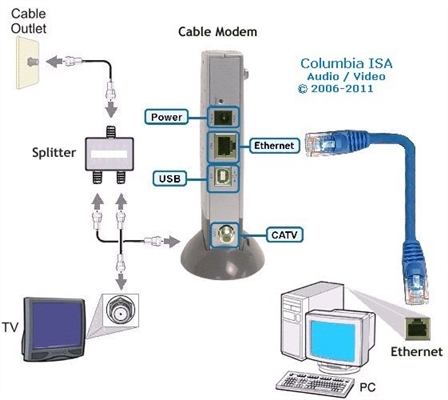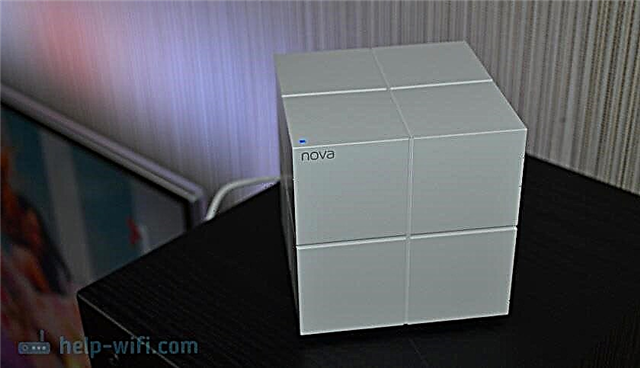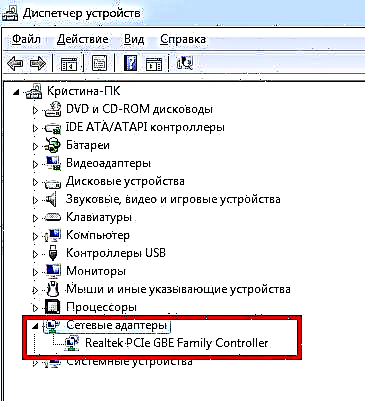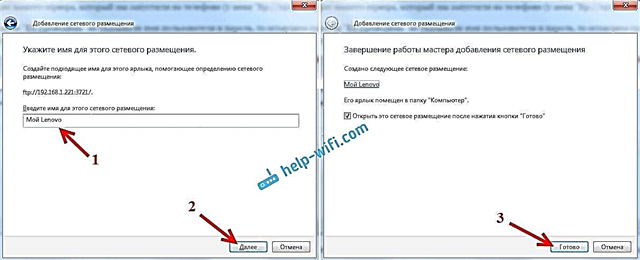If you often transfer files from your Android smartphone or tablet to your computer, and vice versa, then you do it most likely via a USB cable. Today I will talk about the way in which you can transfer files (photos, videos, music) to your phone from your computer (and vice versa) over a Wi-Fi network, through a router.
We will get full access to files on a smartphone or tablet and will be able to copy, delete, create new files, as if connected to a computer via a cable. Only in our case, we will connect by air, without wires. And the connection will be configured via FTP.
All you need is an Android mobile device, a computer or laptop, and a router. The computer and phone must be connected to the same router. Android is connected via a Wi-Fi network, this is understandable, and a computer can be connected both via cable (LAN) and via Wi-Fi.
On the phone or tablet, we use the ES Explorer program to launch the FTP server (this is done in a few clicks), and on the computer we connect to the FTP server, which we will launch on Android. And that's all, you can transfer files. Please note that you will not have access to files that are on your computer. And there will be access only to files on a mobile device, as to a drive. If you want to access files on your computer, you need to set up a local network. There is some information in this article.
Setting up FTP connection between Android device and Windows
Before proceeding to the setup, you need to decide whether you only want to establish such a connection sometimes, and after each disconnection and connection of the smartphone to the router, enter a new address on the computer, or you will often use an FTP connection and want to create a connection to your devices on the computer. That would then just run the server on a mobile device, and immediately watch the files on the computer.
If you want to create an FTP connection to your Android device on your computer, and do not enter the address every time, then you definitely need to reserve a static IP address for your phone (tablet) in the settings of your router. So that the router always gives out the same IP for your device.
This is done differently on different routers. Later, I will definitely prepare a separate manual for different routers. Here's an example:
We go into the settings of the router, and on the main page we click on the "Clients" tab

Next, click on the device for which you want to reserve the address, put the switch opposite the "MAC and IP address Binding" in the "ON" position, and click the "Apply" button. Everything is ready, now our phone, in my case Lenovo, will always receive the address 192.168.1.178.
Launch the FTP server on Android through the "ES Explorer" program
Perhaps there are other programs for these tasks, but I did not even bother to check. Everything works fine through "ES Explorer". Anyway, I think this file manager is the best for Android.
If you have not yet installed "ES Explorer", then install it via Google Play Store. You can install directly from your device. Here is another link: https://play.google.com/store/apps/details?id=com.estrongs.android.pop&hl=ru.
Update: ES File Explorer is no longer on Google Play. You need to search and download it from third-party sites in the form of an .apk file. But at your own peril and risk.
Then we launch "ES Explorer". Open the menu (swipe from left to right), and select "Remote Access". Under the "Status" label there should be the name of your Wi-Fi network. Click on the button "Enable".
The address will appear, which we will now enter on the computer.

This completes the FTP setup on Android. If you click on the button in the form of a "gear" then the settings will open. There are not many of them, but they are useful. For example, you can prohibit shutting down the server, after closing the program, you can configure the port, set the root folder, change the encoding. See more information on the settings under the spoiler.
Advanced FTP settings in ES Explorer
There is an account setting. By default, an unprotected FTP server is created with anonymous access. Optionally, you can set a username and password, which will then need to be specified when connecting on a computer. But this is optional. And yet, there is a "Create shortcut" item. After clicking on it, a shortcut will appear on the desktop with which you can start the FTP server with one click.

Let's go to the settings on the computer.
We connect from a computer to a phone or tablet via Wi-Fi
I tested the connection from a laptop on Windows 7 and Windows 10. If you have Windows 8, it will still work. The laptop easily opened the FTP server that was running on the smartphone, and I got full access to the files and could manage them.
Everything is simple here. We open the explorer on the computer, or go to "My computer", "This computer" (in Windows 10), and in the address bar we enter the address that appeared in the "ES Explorer" program on the mobile device. I have this "ftp://192.168.1.221:3721/". You will most likely have a different address.
Look carefully, enter without mistakes. As will enter, press Enter... You will take away all the files of your mobile device. It's the same in Windows 10.

Now you can manage files: copy them from phone to computer, and vice versa. Delete, move, create folders, etc.
But, if you close the explorer window, you will need to enter the address again, which is not very convenient. Therefore, you can create a connection to an FTP server in Windows. After that, the folder of your device will appear, opening which, you will immediately get access to the files. Provided that the server on the phone is turned on.
You can establish an FTP connection using a standard Windows tool. If for some reason the standard tool does not suit you, then you can use third-party programs, for example the "FileZilla" client.
Create a permanent folder with FTP connection to your smartphone
Note! This method will only work if you have reserved a static IP address for your mobile device in the router settings.
Go to Explorer ("My Computer"), and click on "Map network drive".

On Windows 10, this step looks a little different:

Further, in a new window, click on the link "Connect to a site where you can store documents and images."

Another window will open in which we click "Next". In the next window, double-click on "Select another network location".

Further, in the "Network address, or Internet address" field, enter the address of our server, which we launched on the phone (I have "ftp://192.168.1.221:3721/"). And click "Next".
An account setup window will appear. If you did not specify the username and password in the ES Explorer program, then leave a check mark next to "Anonymous login" and click "Next". And if you specified the data for connection, then specify them.

In the next window, you need to specify a name for the network connection. I wrote something like "My Lenovo". You can enter any name and click "Next". In the last window, click on the "Finish" button.

A folder with files located on your Android device will open immediately. The shortcut to this folder will always be in the explorer. And the files in this folder will always be available when the FTP server (remote access) is enabled on the mobile device.

When you want to upload a song to your phone, or see a photo, you just need to enable "Remote Access" on your mobile device and go to the folder we created.
Is it possible to connect a laptop to a phone via Wi-Fi, but without a router?
Yes, you can. If you don't have a router, and you want to transfer files between your Android mobile device and your laptop wirelessly, then everything can be configured a little differently. Rather, the settings will be exactly the same, just the connection needs to be organized differently.
If it is not possible to connect through a router, then you need to organize a direct connection between the laptop and the mobile device. To do this, just start the distribution of the Wi-Fi network on the phone. It seems to me that every smartphone can do this. This function is called differently. Something like "Access Point".
We launch the access point on the smartphone (you can even not turn on the mobile Internet so that the laptop does not gobble up all the traffic), and we connect our laptop to this access point. Further according to the standard scheme, which I described above. Everything works, I checked it.
Afterword
If you don't often connect to your mobile device for file sharing, then you can of course use a USB cable. But, if you often need to copy something, then the method described above definitely deserves attention. We click on the icon on the mobile device, and on the computer we immediately get access to the files. Conveniently.
How do you use such a connection? What are the pros and cons? Share your experience in the comments, and of course ask questions.











